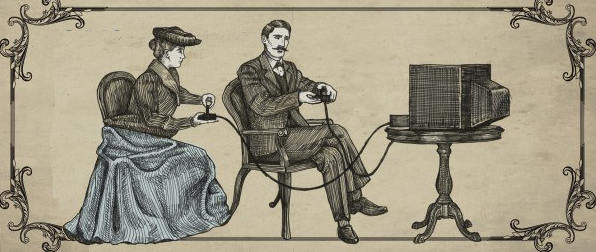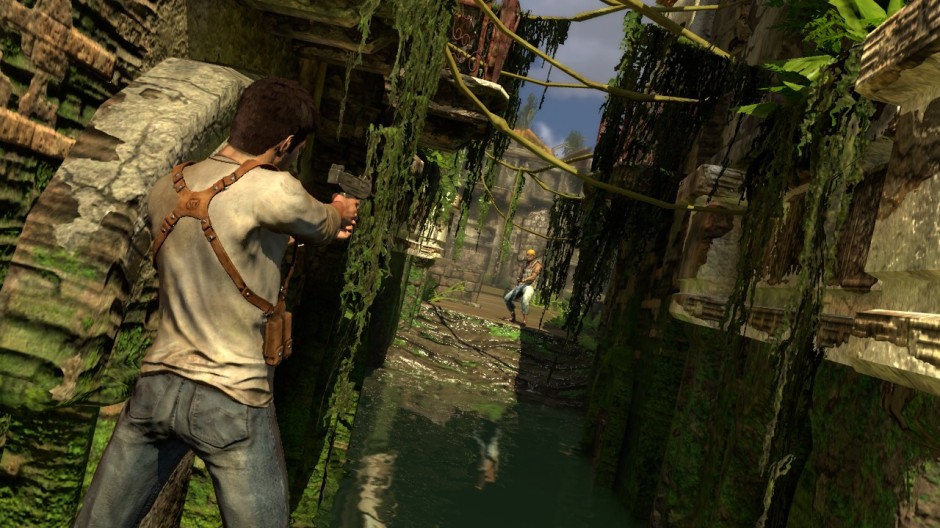 I finally got around to getting a PS3 in December 2013, and since then I’ve been gradually playing through some of the system’s exclusives. But with the recent release of Uncharted 4 on PS4, I thought it was high time for me to finally sample this series for myself. So I dutifully loaded up the first game, Uncharted: Drake’s Fortune.
I finally got around to getting a PS3 in December 2013, and since then I’ve been gradually playing through some of the system’s exclusives. But with the recent release of Uncharted 4 on PS4, I thought it was high time for me to finally sample this series for myself. So I dutifully loaded up the first game, Uncharted: Drake’s Fortune.
I remember that when this game came out in 2007, Sony was playing catch-up with Microsoft. The PS3 had launched about a year after the Xbox 360, and sales were slow to start. Sony was in need of killer platform exclusives to line up against Microsoft’s impressive roster of games (Uncharted went head to head with Halo 3). At the time, I pretty much dismissed Uncharted as ‘Tomb Raider with a bloke’, a seemingly desperate attempt to cash in on the well-worn subgenre of Indiana Jones-style adventure. But even if it struck me as entirely unoriginal, there was no denying that Uncharted was exceedingly pretty. I remember cooing at screenshots of the rusting submarine in the jungle and thinking it was an impressive showcase for the PS3 – as well as an iconic image.
Seeing that submarine in the game itself was no less impressive. And having seen that image so many times in the intervening decade, I had the strange sensation that I’d been there before, even though it was my first time playing the game. Having said that, few of the other locations really stand out in my mind now that I’ve finished Uncharted – it’s all a blur of jungles and ruins, with only the creepy medieval labyrinth sticking out as something that seemed unlike anything I’d seen before.
Playing the game itself was something of a chore at first. I’d gone in expecting it to be just like Tomb Raider – which it pretty much is, when it comes to leaping about on ruins – but the shooting sections are completely different. I ran into my first gunfight with pistols blazing, leaping about all over the place, just like I’d do in Tomb Raider – and I died very quickly. Getting through the shooty bits felt like a war of attrition, and by the point that I got to a huge jungle clearing stuffed full of seemingly endless guards, I was ready to give up on the game. The controls felt clunky, and I kept standing up by accident instead of sneaking around in cover, plus I learned that the only way to win most fights was to stay behind a wall and carefully pick off the bad guys. Which felt pretty boring, to be honest.
But not long after I almost gave up, something clicked. I gradually began to work out when I should stay in cover and when to risk rushing the enemy. I started getting better at placing grenades where I wanted them to go, and using height to my advantage. I began to realise that the gunfights were puzzles with various solutions, some easier than others. I still had to restart some of them many, many times, but I was actually starting to enjoy them, rather than willing them to end.
There are still too many gun battles, though: the kill count in this game is nothing short of astronomical. I must have murdered thousands of mercenaries by the end. Nathan Drake is essentially a one-man army, a tooled-up, beefcake hero of the sort to be found gracing the covers of straight-to-video eighties action flicks. Whereas the gunfights in Tomb Raider were occasional, and often against exotic animals or supernatural beings, Uncharted sees you mowing down fields of soldiers. It doesn’t really make any sense.
And another example of logic being thrown out of the window is the way that the bad guys keep showing up in locations that are meant to be inaccessible. You spend a large part of the game solving puzzles and leaping across chasms to reach secret chambers that the enemy supposedly doesn’t know about, only to find an army waiting for you. It’s ludicrous.
But then again, the game itself never tries to be anything less than a hokey old adventure story, a tale of derring-do with a suitably square-jawed hero. Having said that, I was impressed with the characterisation – Nathan, Sully and Elena come across as likeable leads, and Drake drops some genuinely brilliant quips. And the story is told with aplomb, much unlike the Tomb Raider games. Whereas I barely understood what was happening in any of the first five Tomb Raiders, let alone the motivation of Lara Croft and her various nemeses, I always knew where I was going and why throughout Uncharted.
That’s not to say the story is going to win any prizes, mind you. If you’ve seen Raiders of the Lost Ark then you’ll have a pretty good idea of what to expect. As I watched the final scenes of the game play out, I remarked to Mrs Merriweather that the storytelling and characterisation in this game were better than in many I’ve played. She regarded the cheesey dialogue being exchanged, the narrow escape, the almost kiss, the turnaround ending, the sail off into the sunset, and declared: “This is rubbish”.
I’ve got to admit she has a point. We could have easily been watching any old action flick from the eighties, but with mouth movements that don’t quite match up to the dialogue, and skin that appears unnaturally shiny. The script may be better than most games of its time, but it’s hardly Oscar-worthy – and us gamers have put up with so many shitty stories for so long that our standards have been suitably lowered.
But as a popcorn flick, an action romp, a swashbuckling adventure with a likeable lead, Uncharted undoubtedly works – just switch your brain off at the door.
Better Late Than Never is a regular series in which we play through landmark games many years after their debut, after missing them the first time around. Does the praise heaped on these famous games hold up in hindsight?



